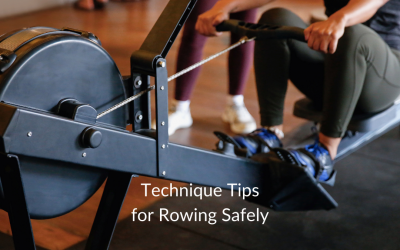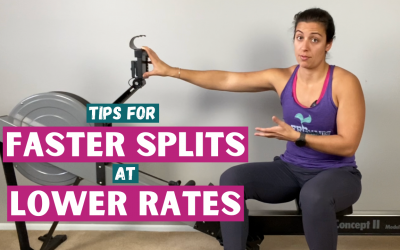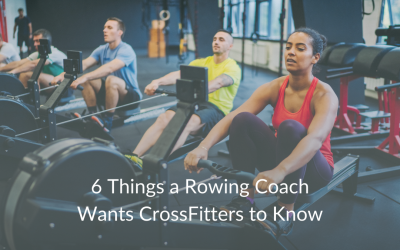How Much Should I Be Lifting?
Maybe you’ve just started lifting, maybe you’re not sure how hard you’re supposed to be pushing in your lifting workouts. You may be asking yourself, “what is it supposed to feel like? What does 80% feel like? What does 90% feel like? Where am I supposed to be weight wise when I’m doing my lifting workouts?”
Well, this is going to be a post for you. I want to talk through these things and give you tools to know that you’re pushing the right amount and lifting the weights that you should be in your strength training.
I’m going to split this up into two different parts. First, I’m going to talk about your main lifting sets and then accessory work. They will look a little bit different and will have a slightly different approach.
Main Lifts
With your main lifts, they will most likely have an intensity level like percent effort or RPE (which stands for Rate of Perceived Exertion). There might be specific percentages that your coach wants you to hit or work up to. Or maybe you’re trying to figure out what this percent effort or RPE even means.
Your main lifts will be shortly after the warmup. They’re going to be the big compound movements in the beginning of your workout. It’s your back squat, front squat, deadlift, bench, overhead press, etc. Those will be your big lifts and the accessories will follow.
In the main lift, how do you know if you’re lifting the right amount? First you want to look at your programming. What is the percent effort? What is the RPE? And go based off that. Knowing how much to “leave in your tank” is going to come with experience. Cut yourself some slack, especially if this is something that’s a little bit newer for you, right? Here’s a table of percent effort, RPE, and how many reps you should have left in the tank.
| RPE | % Effort | Reps in the Tank |
| 10 | 100 | 0 |
| 9 | 90-95 | 1 |
| 8 | 85 | 2 |
| 7 | 80-85 | 3 |
| 6 | 80 | 4-5 |
| 5 | 75-80 | 6 |
It’s important to figure out what it feels like to have 1, 2, or 3 reps left in the tank. When you’re first starting out, you might think you only have two when you have five! That’s ok, as it takes time to build your confidence and experience in how much you can lift. You don’t need to overanalyze it.
Look at Rest
Your main lift will have rest to go along with it. The amount of rest you want should mimic how much rest is programmed. Let’s say for instance, you’re at 80% effort with 90 seconds rest in between the sets. At 80% effort, we’re starting to slow down a little bit on the last couple reps, looking to have two or three reps left in the tank. So, with those 90 seconds of rest, you should want that whole 90 seconds of rest. That’s typically good indicator that you’re pushing yourself enough.
To make sure that you’re pushing yourself enough, look at that rest period. If you want the full rest, then you’re in a good spot. If you’re lifting and you have 90 seconds rest and you’re good to go in 45 seconds, that is a good indication that you could lift more.
As you start to lift more, you get more experience. You’re going to figure this stuff out as you go.
Reducing Reps
If you went from 5 sets of 5 reps and now, you’re doing 3 reps in a set, the goal is to go up in weight. Less reps means more weight (most times). When you do a lifting cycle again, then you know what you did last time and you can try to go a little bit heavier. But especially if this is your first go around, it’s the perfect time to figure out what you can do.
Lifting Too Much
Lifting too much will be more obvious. If you know you’re supposed to have one or two reps left in the tank, and you get to the end of the set and you’re like “whoa, I don’t think I could do another one”, that’s an indication where it might’ve been a little bit heavy.
It’s okay to then back off for that next set, especially if you’re tired. Maybe you didn’t sleep well that night or you’ve had a stressful week. As the coach, I use percent effort because crappy days are going to happen. 80% effort today might be different than last week. Last week maybe you were feeling amazing and this week, not so much.
80% effort might be a little bit less today, but you’re still at 80% and you’re still going to make progress that way. Don’t overthink it too much.
Quick disclaimer: make sure you’re following the programming. More than likely your coach is going to have some notes for you on what they’re looking for your training to feel like. Above all else, listen to that first.
Accessories
Moving on to super sets or accessory work. After the main lift comes accessory exercises. Accessory exercises are exactly what they sound like. They support the main lift, are typically not as big of a movement, but still add value.
So, what weight do you pick up? Most of the time this accessory work is going to be using dumbbells, but not all the time.
Reps
Look at that rep scheme first. Are you doing 8 reps? Are you doing 12 reps? Are you doing 20 ? The higher the reps, it’s probably going to be lower weight. Start with a weight that you think you can do and leave a couple reps in the tank.
You don’t want to go to failure on every set of this accessory work. If you’re going to failure for everything, you’re going to get too taxed. It’s going to be hard to recover in between workouts. You’re looking to leave like one to two reps in the tank when doing accessory work.
There’s nothing wrong with going down or up in weight in between sets. For example, you do the first set with tens and then you’re like, “okay, that was way too easy. I’m going to try fifteens” and that’s fine. There’s no rule that says every set needs to be the same.
Then, if you’re feeling stronger in a couple weeks you could try 20s for the first set and then go back down to the 15s to try out the heavier weight. Maybe you don’t get as many reps with the 20s, but hey, you tried it!
Rest Period
The next thing that you can look at is your rest period. After you’ve looked at how many reps, look at your rest. If it’s 90 seconds to 2 minutes rest, then that means it’s supposed to be heavier. Longer rest can mean more weight.
There’s also the inverse of that. Less rest will require a weight that you can keep moving at a good pace with. When you’re not supposed to rest in between sets it’s not supposed to be a race either. Maybe there’s a tempo you still need to stick to. It’s not like you’re racing to get through the reps but at the same time you don’t want to rest from one to the next. That means you want to pick a weight that you can keep moving through it from one exercise to the next.
Again, it’s okay to switch weights in between sets. Sets with 60 seconds rest are going to feel much different than sets with no rest. The sets with no rest or sets with a lot of tempo are going to start to feel like cardio.
If you have good programming, you’re going to have a mix of all of that. Main lifts with lots of rest, some accessories with little to no rest and accessories with some rest.
Summary
With managing your lifting effort, look at your reps and the rest. More rest means potentially heavier weight. Less rest typically less weight. And so on and so forth.
With your programming, your coach is going to have notes for you (or at least I hope they do!). Most of the time you’re leaving one to two reps in the tank.
Another way to think about it is to have the last two reps be tougher than the first two. You’ll notice that your reps get tougher when you’re starting to slow down. For example, you can’t stand up quite as fast in the squat, or you’re a little bit slower to push it up on an overhead press. When you start to slow down, that’s a good indication that those reps are getting harder.
Leave some reps in the tank and listen to the programming. More than likely your coach will have notes on what that is supposed to feel like. If you have any questions on managing your lifting effort, ask your coach if you’re working with one.
Technique Tips for Rowing Safely
Safety is a big deal. When we want to improve our fitness, we don’t want to hurt ourselves in the process. There are a couple of key things to look for in your rowing stroke if you’re wanting to stay as safe as possible. I’ve grouped the technique considerations by...
3 Tips to Get Faster Splits at Low Stroke Rates
You may have heard the saying “row slow to row fast”. If you haven’t, its entirely true! You may already be confused, so let me explain. In order to be efficient on a rowing machine, it’s important to work on keeping less strokes per minute while still maintaining a...
6 Things a Rowing Coach Wants CrossFitters to Know
All right CrossFitters, I'm calling you out here. As a CrossFit level 1 trainer, I've seen so many different technique flaws and issues when it comes to rowing. I know that rowing is not something that is focused on in a WOD. However, rowing can really hurt your...



